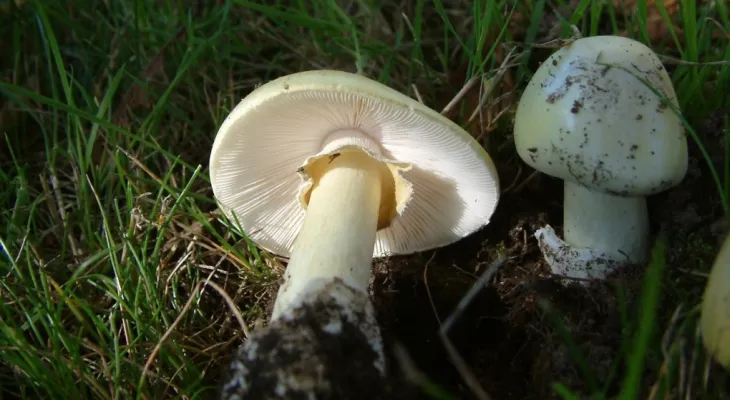Search here
Newspaper
Search here

Arab Canada News
News

Published: August 10, 2023
Mushrooms suspected of playing a role in what may be a triple murder in Australia can be found in Canadian forests.
The Australian case made headlines this week when police announced they believe "death cap" mushrooms were served at a family lunch in July. A week later, three of the four people who attended the lunch died.
According to police, Erin Patterson, 48, served Amanita mushrooms to her in-laws and her husband, who is severely ill in the hospital.
Officers from the small town of Leongatha, where the incident occurred, say Patterson is a suspect in what they call a murder investigation. Patterson has denied any wrongdoing.
After the incident, Canadians who heard the story turned to search engines to find out if the poisonous mushroom could be found here, as the concerned mushroom is known to grow in British Columbia.
"Death caps" are found primarily in "urban" areas of the Lower Mainland, Fraser Valley, and Vancouver Island, according to the British Columbia Provincial Health Services Authority (PHSA).
The fungi grow in wetter conditions, typically in late fall, but can appear in summer in regularly watered areas.
Just last month, a young child ingested one type of mushroom, prompting the regional health authority to issue a warning; the child survived, but the incident should serve as a cautionary tale, health officials say. They warned of the mushroom's toxicity, saying it can cause liver damage and sometimes death.
County officials say a person will experience abdominal pain, vomiting, diarrhea, and dehydration eight to 12 hours after consuming the mushroom. A second wave of symptoms comes after 72 hours, including low blood pressure, liver and kidney failure, and seizures, according to a fact sheet from the British Columbia Centre for Disease Control.
"Death caps" are responsible for the most lethal mushroom poisonings in the world, according to the center.
Anyone who suspects they may have consumed one of these deadly mushrooms should go to the emergency room immediately, advises the British Columbia Centre for Disease Control.
There have been about 100 sightings of "death cap" mushrooms across British Columbia, according to a study published earlier this year indicating that sightings are likely to increase as the fungus spreads.
Researchers at Cold Spring Harbor Laboratory published a study in January explaining how mushrooms can reproduce rapidly.
They said reproduction involves the merging of sexes, but evidence suggests that "death caps" can reproduce "by individual organisms."
The study stated, "The diverse reproductive strategies of invasive death caps are likely to facilitate their rapid spread, revealing a profound similarity between plant, animal, and fungal invasions."
At the time of its publication, the study had not yet undergone peer review.
Mushroom species are considered invasive in Canada. "Death caps" resemble Asian mushrooms and other types that grow within cities, along tree roots, and on tree trunks.
In British Columbia, officials encourage people to report their sightings for safe removal of the mushrooms.
Comments